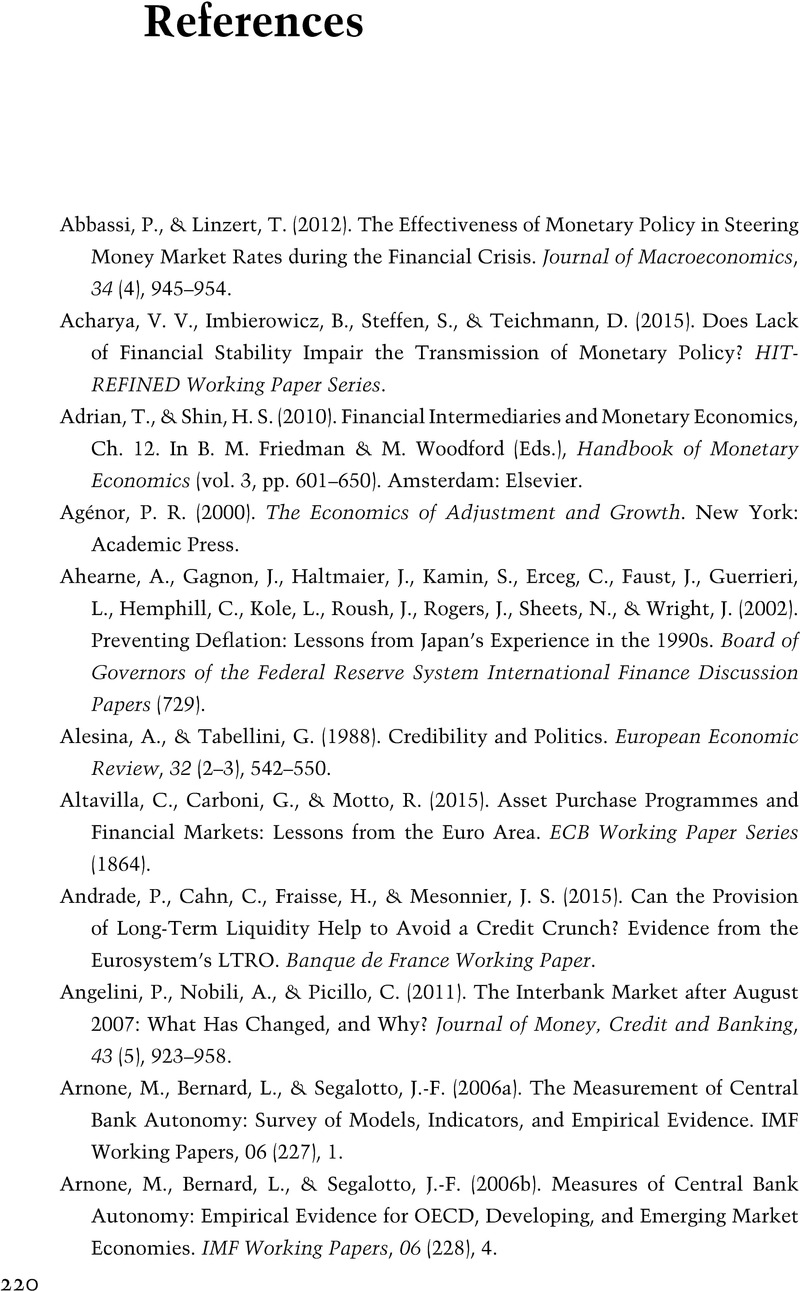Book contents
- Reconsidering Central Bank Independence
- Reconsidering Central Bank Independence
- Copyright page
- Contents
- Illustrations
- Preface
- Acknowledgements
- Abbreviations
- Part I The Theoretical Foundations
- Part II Balance Sheet Operations in Different Times and CBI
- Part III The Political Economy of CBI in the Real Economy
- References
- Index
- References
References
Published online by Cambridge University Press: 25 April 2024
- Reconsidering Central Bank Independence
- Reconsidering Central Bank Independence
- Copyright page
- Contents
- Illustrations
- Preface
- Acknowledgements
- Abbreviations
- Part I The Theoretical Foundations
- Part II Balance Sheet Operations in Different Times and CBI
- Part III The Political Economy of CBI in the Real Economy
- References
- Index
- References
Summary

- Type
- Chapter
- Information
- Reconsidering Central Bank Independence , pp. 220 - 242Publisher: Cambridge University PressPrint publication year: 2024



